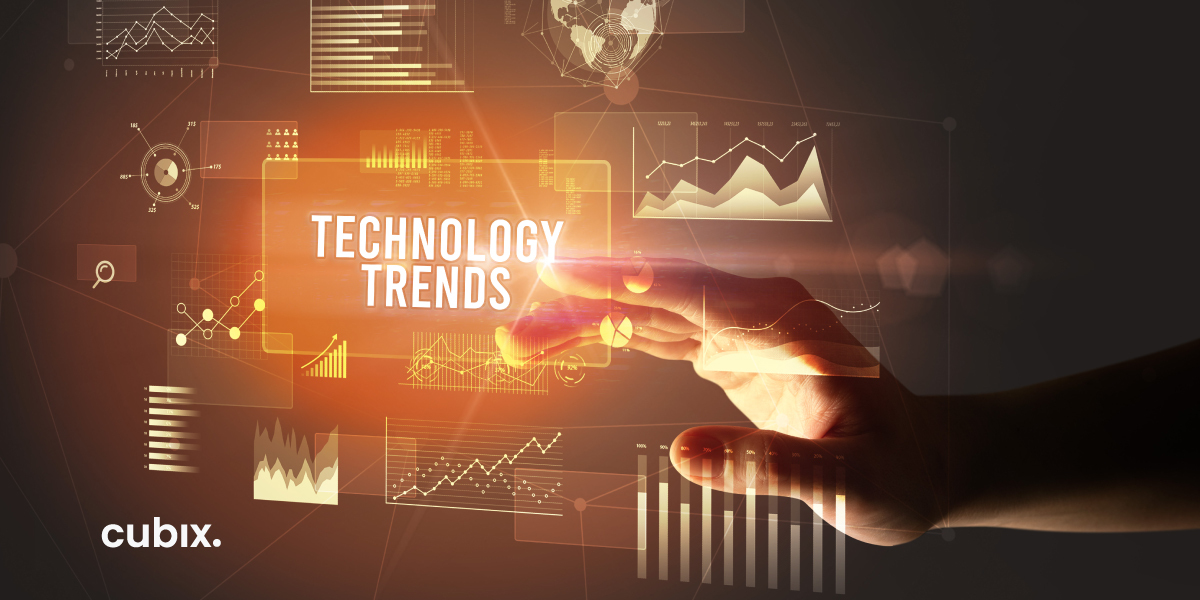In 2021, technology trends have driven industries to achieve better results. While the COVID-19 pandemic disrupted work, it led to a significant shift in technology. It has triggered trends that produced new dynamics, different strategies, and a new vision, to cope with new challenges. While a dramatic shift occurred, with some industries collapsing and new ones taking off, the world has somewhat conformed to the new norms and demands for diverse approaches.
In today's world that is increasingly influenced by technological advancement, you must remain abreast of the current and future trends. Particularly now, working strategies have transformed a great deal. Therefore, it is mandatory for you to be equipped with the right tools and information concerning the technology trends of 2021 and 2022. This post will offer insight into future working trends, including the newest ones already adopted.
Artificial Intelligence and Machine Learning
Artificial intelligence technology or AI has become a buzzword since its release. Further, AI has profoundly affected the digital industry and has opened up new doors; image recognition, speech recognition, navigation apps, smartphones, personal assistants, and much more are part of its spectrum of progress.
Moreover, Artificial Intelligence has begun to play a role in today's health system. A recent report predicts that AI will reach USD 309.6 billion by 2026. Meanwhile, AI is being implemented at different levels in several industries, resulting in advanced roles, particularly in the very field that builds this technology, such as programming, testing, and support. The average salary of AI programmers and associated roles is $1,25,000 to $145,000, more than other careers.
Nonetheless, machine learning is a subset of AI, covering all of the other 2021 trends. In the coming years, machine learning and AI will be pivotal in generating new jobs.
Find more exciting information about Artificial Intelligence here
Also read our recent post on Artificial Intelligence and the world we live in
Robotic Process Automation
Robotic process automation will play an increasing role in 2021's technology trends by providing numerous jobs and moving toward an increasingly digitized world. Meanwhile, RPA refers to the use of software to automate business processes, and assist with transactions, interpret data records, and respond to emails.
RPA will offer a multitude of career opportunities involving developers, project managers, business analysts, solution structures, and advisors within the next few years.
Read more about Process automation and role of robotics
Edge Computing
Edge computing is another buzzword amid technology trends. Edge computing architecture is a distributed IT structure that transports computing resources from cloud data centers as near as possible to devices. The most crucial aspect is to minimize latency demands while handling data and economizing the network cost.
Edge computing technology also encompasses routers, ISPs, switches, access devices, multiplexers, and other components. Further, the edge computing industry will hit around $6.72 billion. As this technology advances, it will soar to new heights.
Read a bit more on Edge Computing
Quantum Computing
Quantum Computing is a realm of digital computing hinging on quantum theory rules. Computer architecture today can only decrypt data in bits involving the digits 1 and 0. The technology has done an excellent job of restricting the spread of Covid-19 and developing vaccines. The world is indebted to it for its capability in effortlessly probing, tracking, analyzing, and delivering what we need.
Quantum Computing is also utilized in the banking and finance sector for mitigating credit risk in high-pitch trading. To aid this process, quantum computers are used, and that's because they are the fastest compared to regular computers. By 2026, the global quantum computing market is expected to reach $1.76 billion. In 2021, quantum mechanics, linear algebra, probability, and information theory will be key technology trends.
Virtual Reality and Augmented Reality
VR immerses users in an environment, while augmented reality blends a user's environment with an environment that belongs to an app or game itself. In 2021, technology trends will make both technologies part of our daily lives. AI and virtual reality have enormous potential for training, entertainment, education, marketing, and rehabilitation after a mishap.
Furthermore, the AR and VR industries seem set to reach $209.2 billion by 2022. It is a win-win situation with the latest technological trends, especially if you have programming aspirations. The role is way more manageable now. However, along with programming skills, you must have unique ideas.
Be sure to read;
How Augmented Reality will Revolutionize Several Industries in 2021?
5 real-world applications of augmented reality you hadn’t thought of
Blockchain
Though blockchain technology appears complex, its internal logic is surprisingly simple. First of all, it is the same as a database since it carries digital information on a computer system. Additionally, blockchain technology Saves data chronologically since it is only possible to add and not edit or remove. Thus, a chain of data is made up by naming it. Since it can't be changed, it is secure. Many industries embrace blockchain technology to base their products on, which automatically increases their demand.
Learn more about Blockchain Technology - Check our recent blog posts
Why fintech organizations need to adopt blockchain technology?
New Institutional Economics: Blockchain Technology
Internet of things (IoT)
The concept of the Internet of Things refers to having all your gadgets connected and operable through Wi-Fi connectivity. This technology is used in home appliances, workplaces, automobiles, and more. We can lock our office doors, turn on our home lights, and heat our ovens, all with the controls in our hands. IoT is identified as a progressive technology trend in 2021, with more to come in 2022.
IoT will play an increasing role in customer service improvement and medical applications. Although this technology trend is still in its infancy, it is expected that global spending on IoT will cross $1.1 trillion by 2022.
IoT Will Improve Security and Service Delivery in the Future
Current technologies require you to grasp information security, AI and machine learning fundamentals, networking, hardware interfacing, data analytics, automation, and the idea of built-in systems. There is a great deal to know about. However, from the brief insight provided in this post, you can easily tell where IoT, AI, ML, VR, AR, and blockchain tech, as technologies are headed. There is little doubt that this technology will provide ease and security in various sectors. Hence, there is interest from the public and private quarters.

